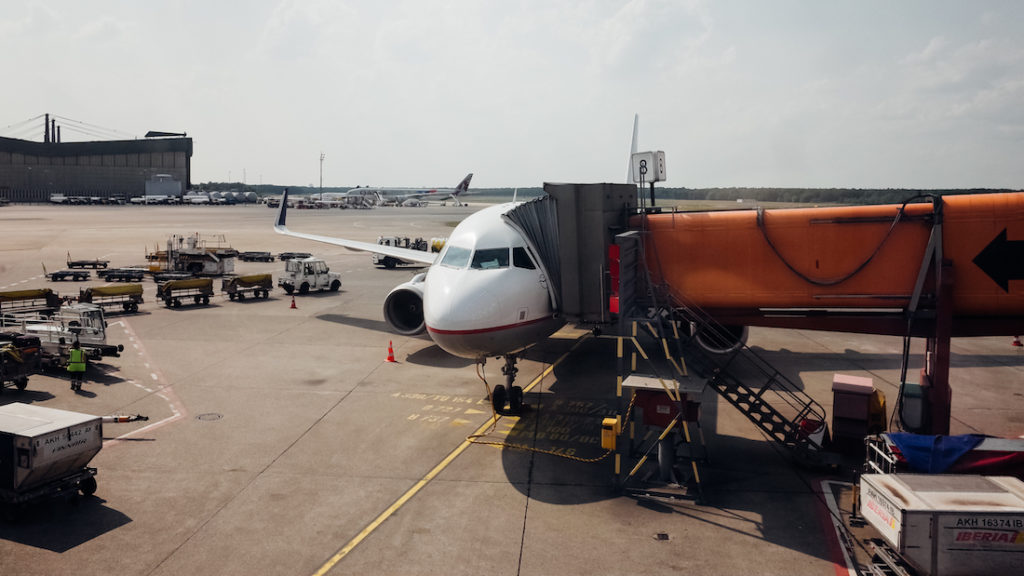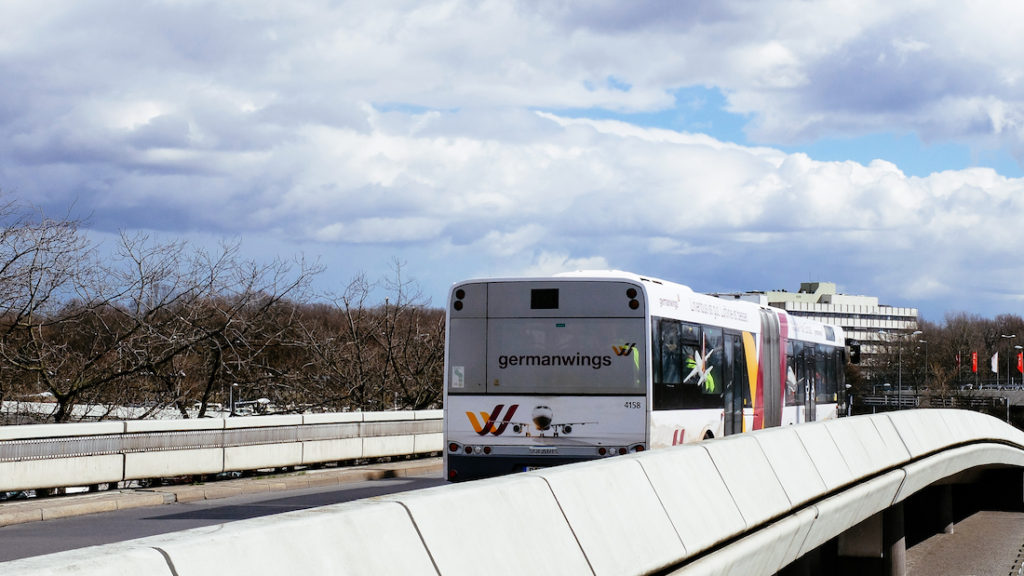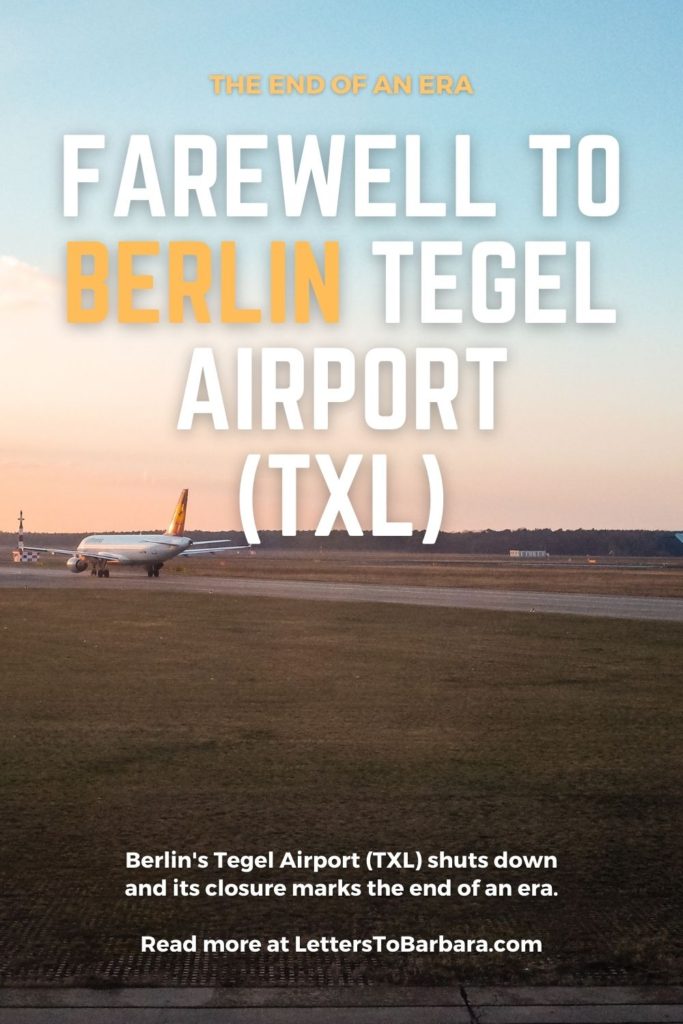I still remember landing for the first time in Berlin Tegel. The year was 2000, and I flew from the Ellinikon International Airport, the former airport of Athens, that shut down in 2001. I remember seeing Berlin from above: lakes, forests, and the city somewhere in the distance. It was a cold July morning with light rain. I thought I’d land in a big, modern airport. But the Berlin Tegel airport was the opposite: a relatively small, outdated airport. I didn’t pay that much attention to it, but I remember grabbing my suitcase and being already in front of the taxis a minute later.
I turned 20 in Berlin, and I flew back to Athens a day later. Again, Tegel surprised me with its ease of use. I’ve never seen an airport that was so easy to navigate. The hexagonally shaped terminal Terminal A of Tegel became my favorite European Terminal soon. You could reach any departure gate in less than five minutes. No rushing in the airport, no need to be two hours before the flight there. Just two-three duty-free shops, tired pretzels, and that was it.
A few years later, I thought of arriving thirty minutes before departure in one of my first business class flights. I didn’t check the time at all: in Tegel, it seemed that you always had time. I just disembarked from the bus, walked to the counter, and went through the security check. Everything worked like a charm.
Berlin Tegel Airport was (in) the city’s heart

Tegel’s proximity to the city meant two things: a joy for travelers and a horror for people living nearby. I was among the lucky ones: I lived in Charlottenburg for the first nine years. It meant that the 109 bus would bring me close to my flat in less than twenty minutes. Try to imagine that: you land in a city, and after picking up your luggage, you need one minute to exit the airport. Then you need another minute to the bus stop. And within twenty minutes you are at home.
As a frequent flyer, I visited lots of airports. I saw airports that gave me a hard time (like Charles de Gaulle in Paris), I stopped at boring airports (like the one in Frankfurt), and I landed in beautiful ones (like the Oslo Gardermoen). And then it was Berlin Tegel. Close to the city, with a 70s atmosphere and grumpy cement that made it compatible with Berlin’s spirit. To this day, I think that Terminal A of Berlin Tegel should be the prototype of every new airport. I wish modern airports consisted of several hexagonal terminals like the one in Tegel.
From Berlin Tegel (TXL) to the world

I flew more than eighty times from Tegel during the last eleven years. I took short and long flights, and I flew for work and leisure. Tegel was not just my gateway to the world; it was also the place that, when seeing it from above, felt like coming home. I remember not looking forward to my return to Berlin after a long summer in Athens -and then, when I landed in Tegel, I felt that I never left the city.
Yes, not everything was shiny in Tegel. Terminal C, which opened in 2007, was always horrible: long queues, bad facilities, packed departure gates. Also, due to Tegel’s proximity to the city center, you could see insane traffic on the motorway.
I still remember the day I flew to Palma de Mallorca. A strike on public transport paralyzed the city, and the cars weren’t moving at all on the motorway. Then, one man opened the door of his taxi, took his suitcase, and started running on the highway. Soon, loads of other people did the same. To this day, this is one of the most bizarre things I saw in Berlin: dozens of passengers running on the highway with their luggage. It almost felt like a dystopian movie.
The inglorious end of Tegel and its dubious future

Berlin kept dreaming of a bigger airport and, subsequently, dreamt of more money. Soon, a new airport was planned, and it would supposedly open in 2012. However, there were major issues with the security protocols, and instead of 2012, the BER Airport opening was delayed for almost nine years. But even now, the time was not right: the airport opened amidst the Coronavirus pandemic. Even though it’s huge, in the era of social distancing seems small. There are already plans for expanding it.
Tegel’s ending was inglorious. On my first flight after the lockdown, it felt like flying during a war. Tegel remained shut for two months during the lockdown, and many people thought it was the right time to stop operating. However, the airport managed to survive for a few more months. But now, at the beginning of November 2020, Berlin Tegel is shutting down forever. No events or happenings are taking place: one of Berlin’s landmarks slips into oblivion overnight. It might be an inglorious ending, but that’s part of Berlin’s spirit, I guess.
The future of TXL remains unknown. There are different kinds of plans. People dreaming of more money (the ones who dreamt of the new airport and failed) want to plant 800 companies with some 17,500 employees there. It’s clear that Tegel won’t follow the example of the former Tempelhof Airport that turned into a park. The city’s priority is profit, not open space for the people. Sad but true for a city that marketed itself for years as “poor but sexy.”
To some, Berlin Tegel might feel cold. Or outdated. Or even a remnant of the Cold War. No matter what, TXL was an organic part of the city’s life. It was there to greet passengers, and it was there to remind us of better days. Hit by the city’s pomposity and sealed because of the pandemic, Tegel is now part of Berlin’s history.
Thank you for the memories, Berlin Tegel. I will miss you.
Die Crew verabschiedet sich. #Tegel #TXL pic.twitter.com/hPfdI78dHI
— rbb|24 (@rbb24) November 8, 2020
Quick facts about TXL

Here you can see some quick facts about Tegel Airport.
Official Name: Otto Lilienthal
IATA Code: TXL
ICAO Code: EDDT
Terminals: 4 (A, B, C, D)
Opened: 1948
Closed: 2020
Busiest domestic route: Munich
Busiest international route: Zurich
Buses to and from Tegel Airport: 4 (109, TXL, X9, 128)
Last flight: Air France to Paris–Charles de Gaulle on 8 November 2020
Passengers (2019): +24,000,000
***
What’s new on Letters to Barbara – Recap 25
October reminded each one of us how horrible 2020 really is. After a short summer break, the Corona restrictions returned, and our lives are once again in a comma. Europe is slowly slipping once again into lockdowns, and the joy of life is a distant memory. This is not a year: it feels already like a decade.
From my side, I tried to remain focused, exactly like during the first wave of the pandemic. I tried to carry on writing and, somehow, I thought that I could only keep myself sane if I followed my daily routine. So, this month, apart from working on side projects for clients, I managed to post four articles.
As it’s always the case, the first post of the month was last month’s recap. After being fed up with Social Media, I thought of ranting a bit about Instagram captions. I wrote a short article on what makes me cringe when I read captions beneath photos, and I thought of adding some examples of interesting use of Insta captions. You can see my article about Instagram captions here.
Soon, I realized that I didn’t post for quite a while a travelogue. It was almost three months since my last Letter to Barbara, and the time seemed right. Earlier this summer, I traveled to a remote Greek island, where I stayed for a couple of weeks. It was one of the most bizarre vacations of my life. In late August 2020, I visited Donoussa, a tiny island in the Cyclades.
The days in Donoussa were very relaxing, and I cannot really tell you how good it felt being there, especially after the avalanche that 2020 has been. My travelogue from Donoussa was, therefore, a somewhat melancholic post. You can read my impressions about the small island here.
One of my decisions during this pandemic was to take a different approach and offer something back to the blogging community. That said, after blogging for more than two years, I thought of writing some articles that would help people who just started blogging. Even though I’m in the travel blogging niche, some things are common for every kind of blog. So in October, I wrote a very long post about a must-use SEO tool. Finding the right keywords is an essential element of blogging life and KeySearch does exactly that. Check out my KeySearch review and tutorial here (and find a code for 20% off on every annual plan).
The last post of the month was about Greece. Spending a bizarre summer in Greece also meant a few more excursions around the country. Even though the conditions were not optimal, I traveled a bit around Greece. Specifically, I went on some day trips from Athens, and I’ve been to some places that I haven’t visited since I was a teenager. The first one of them was Mycenae, one of the most legendary locations of antiquity. I wrote an extensive guide, and I shot several photos plus a 4K video. You can read my article about Mycenae here.
And that’s it with my October 2020 recap and my farewell to Berlin Tegel Airport.
You can access my previous recaps by clicking here.
*Get my FREE Travel Writing Course*
Buy the camera I use | Book your hotel
Pin it for later

Please share, tweet, and pin if you enjoyed reading Farewell to Berlin Tegel Airport – Recap 25. Your support keeps this website running and all the info up-to-date.
Last Updated on December 20, 2021 by George Pavlopoulos



